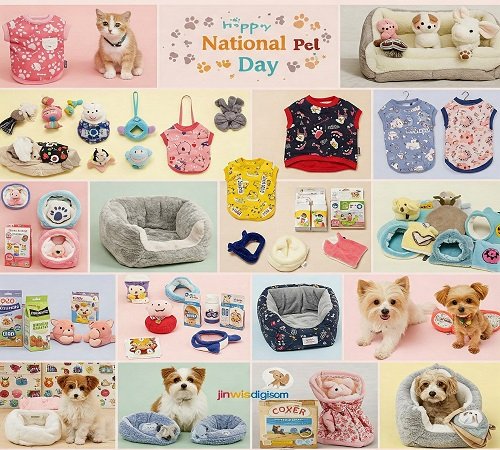The Rise of Eco-Friendly and Sustainable Products: A Guide to Making Conscious Choices
Introduction to Eco-Friendly Products
In recent years, eco-friendly products have moved from being niche options to becoming mainstream choices for consumers worldwide. These products are defined by their ability to minimize environmental harm throughout their entire life cycle—from production and packaging to use and disposal. Often, they are crafted from renewable resources, manufactured using sustainable processes, and designed to reduce waste. The goal is simple: promote healthier living for people while protecting the planet.
The rise in interest is not accidental. Growing awareness about climate change, pollution, and resource depletion has pushed both individuals and businesses to rethink consumption habits. More consumers now prefer products that are sustainably sourced, ethically produced, and have a smaller carbon footprint. This shift demonstrates a conscious effort to embrace eco green living—a lifestyle that balances human needs with the well-being of the environment.
📖 Learn more about what defines eco-friendly products from Earth.org.
Why Sustainability Matters
Sustainability is no longer just a buzzword—it’s a necessity. Our planet faces increasing threats from pollution, deforestation, and industrial practices that exploit finite resources. The World Economic Forum reports that the fashion industry alone contributes to 10% of global carbon emissions, highlighting the urgent need for responsible consumption and production.
Pollution, too, continues to harm ecosystems. According to the Environmental Protection Agency (EPA), industrial discharges remain a significant source of water contamination, affecting biodiversity and public health. Without a shift towards sustainable practices, these challenges will continue to escalate.
Climate change adds another layer of urgency. The IPCC warns that unchecked greenhouse gas emissions will disrupt global weather systems and food security. By supporting sustainable products, consumers can help reduce emissions, conserve natural resources, and foster a more resilient future.
Exploring Different Types of Eco-Friendly Products

Eco-friendly products come in various forms, each addressing sustainability in unique ways:
Biodegradable Products
These items are designed to decompose naturally without polluting the earth. Examples include compostable food containers, biodegradable dog waste bags, and personal care products made from plant-based materials. They enrich soil rather than contributing to landfill buildup.
Recyclable Products
Products made from recyclable materials—such as glass, aluminum, or paper—help conserve resources by being reprocessed into new items. Supporting recycling promotes a circular economy, where waste is minimized and materials are continuously reused.
Upcycled Products
Upcycling transforms waste into functional or creative new items. Examples include handbags made from repurposed fabric or furniture from reclaimed wood. These products not only reduce waste but also provide unique, meaningful alternatives for consumers.
💡 For inspiration on eco-friendly shopping, explore EcoWatch’s list of sustainable products.
How to Identify Truly Sustainable Products
Not every product labeled “eco-friendly” lives up to its claims. To avoid falling into greenwashing traps, consumers should pay attention to the following:
- Read Labels Carefully: Look for keywords like biodegradable, compostable, and made from recycled materials.
- Check Certifications: Recognized seals such as Fair Trade, USDA Organic, or Energy Star signal verified sustainability.
- Research the Brand: Companies like Patagonia and Seventh Generation are known for transparent practices.
- Be Wary of Vague Marketing: Terms like “all-natural” may not guarantee sustainability without certification.
Consumers who do their homework can confidently choose products that align with their values and support eco green living.
Benefits of Choosing Eco-Friendly Products
Eco-friendly choices offer advantages far beyond environmental protection:
- Lower Carbon Footprints – Sustainable products contribute to reduced greenhouse gas emissions.
- Healthier Living – Eco-friendly products often avoid harsh chemicals, promoting better air quality and fewer allergens.
- Economic Value – While some items may cost more upfront, their durability and long lifespan provide long-term savings.
For example, reusable stainless-steel bottles outlast dozens of single-use plastic bottles, saving money while reducing waste. Consumers also increasingly look for sustainable gift ideas for him/her or ethical gifts for him, such as reusable grooming kits or eco-friendly wallets, which combine style, durability, and environmental responsibility.
Challenges in Adopting Eco-Friendly Products

While interest in eco-conscious products is growing, several barriers remain:
- Higher Costs: Sustainable items like organic cotton clothing are often priced higher due to ethical production methods.
- Limited Availability: Many local stores still lack diverse eco-friendly options, forcing buyers to search online.
- Lack of Awareness: Some consumers are unaware that sustainable products can also improve indoor air quality or reduce allergens.
Addressing these challenges requires education and systemic support. By increasing awareness and improving accessibility, society can make eco green living easier for everyone.
Practical Tips for Transitioning to Sustainable Living

Adopting an eco-conscious lifestyle doesn’t require drastic changes. Small steps can make a huge difference:
- Switch Gradually: Replace products with sustainable alternatives when they run out.
- Cut Energy Use: Use LED bulbs and energy-efficient appliances.
- Reduce Waste: Compost organic scraps, shop with reusable bags, and limit single-use plastics.
- Go Plant-Based: Even a few plant-based meals a week reduce environmental strain.
- Gift Sustainably: Choose ethical gifts for him like bamboo sunglasses or eco-friendly grooming sets, and sustainable gift ideas for him/her such as handmade organic candles, reusable notebooks, or solar-powered gadgets.
🌍 For more tips on building sustainable habits, check out UN Sustainable Living guidelines.
Innovations Driving Eco-Friendly Product Development
Technology and creativity continue to reshape eco-friendly markets:
- Bioplastics: Derived from cornstarch or sugarcane, they reduce reliance on petroleum-based plastics.
- Edible Packaging: Startups are producing wrappers you can eat, cutting down on plastic waste.
- 3D Printing: Enables efficient, waste-free manufacturing.
- Closed-Loop Systems: Companies like Patagonia invite customers to return used items for recycling.
These innovations not only reduce environmental impact but also set new industry standards, encouraging other brands to follow suit.
Conclusion: A Collective Step Towards a Greener Future
The rise of eco-friendly and sustainable products reflects a collective shift toward responsible consumption. Whether you’re searching for sustainable gift ideas for him/her, buying ethical gifts for him, or simply exploring ways to embrace eco green living, every choice matters.
From reducing waste to supporting ethical companies, small actions contribute to larger systemic change. Together, consumers and businesses can create a ripple effect that fosters innovation, protects natural resources, and ensures a healthier future for generations to come.
🌱 Explore more ways to live sustainably at Eco Warrior Princess.

